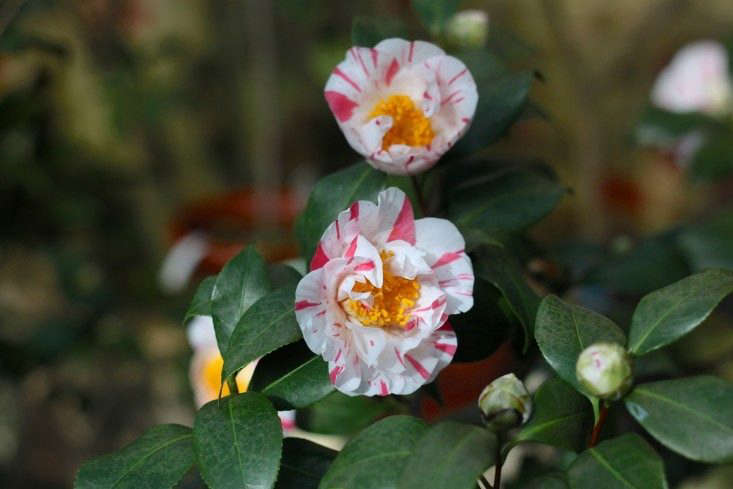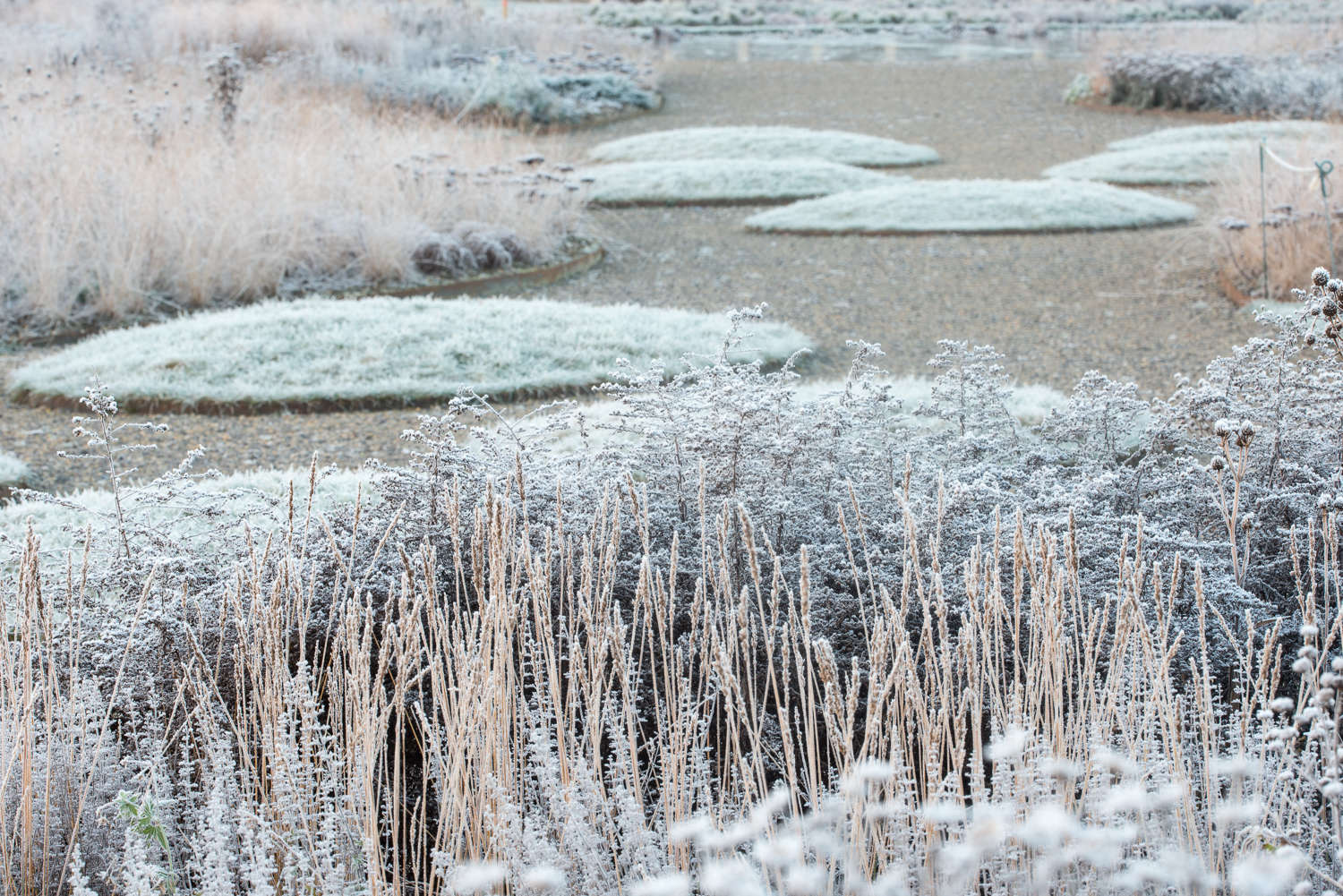Camellia: “Old-Fashioned Favorite”
On my street growing up there was one shrub that every house had planted on the north side near the front door: a camellia. My neighborhood was built as low-cost, compact, defense-worker housing during World War II. My thought about the relation of that plant choice to what was going on at the time is this: The builders needed a shade-tolerant evergreen shrub that was tough, easy to maintain, and showed hope and beauty. That is the essence of the camellia.

Camellias are long-lived shrubs or small trees that are native to eastern and southern Asia but have a long history with the American South, where they are a favorite. With more than 3,000 varieties blooming in a wide range of sizes, shapes, and colors, there’s a camellia for practically any garden style and color palate.

This family of plants includes two main species: Camellia japonica and Camellia sasanqua. In general, Camellia japonicas are large shrubs with large flowers that bloom from early winter through early spring.

Sasanquas, on the other hand, have smaller foliage and blooms, with flowering in the fall. Both types will produce countless blooms on waxy foliage given the right amount of care, lending an old-fashioned charm to the garden when other flowers fade and providing much needed structure during bare seasons.

Blooms come in a plethora of colors, from white and pink to deep red; some are multicolored. Some resemble a wild rose while others resemble a peony.

While most japonica camellias do not have fragrant flowers, a few sasanqua varieties are noted as being politely perfumed: Pink-A-Book, Kramer’s Supreme, and Buttermint.
Fascinating fact: The reason these varieties produce a scent while the others don’t is that these fall-blooming types, with their smaller flowers, have competition from other fall-blooming plants to attract bees, so the sasanqua types have to emit a fragrance to attract pollinators. Japonicas, on the other hand, are winter bloomers and have far less competition from other blooming plants.

Cheat Sheet
- One camellia makes a spectacular specimen, while several planted together make a unique, loose hedge. Also consider training them as an espalier to decorate walls and fences. Camellias also make superb container plants.
- Prune your camellias after blooming has ceased, but during the bloom time be sure to cut and bring some stems inside for arrangements or float some flower heads in a shallow bowl of water.
- Camellias look at home in woodland or cottage gardens, accompanied by japanese anemones, campanulas, and other acid-loving plants such as azaleas and rhododendrons.

Keep It Alive
- Camellias require slightly acidic soil and will show signs of stress such as yellow leaves if the soil pH is too high. You can correct soil that is too alkaline by fertilizing with a formula for acid-loving plants in the spring.
- Loathing wet feet, camellias need loose, well-draining soil that stays moist but not soggy. Their roots demand high amounts of oxygen; therefore their roots are on the shallow side.
- In general, these plants bloom better if sited in partly shaded conditions. Morning sun is preferred or a spot with all-day dappled sun from tall trees.
- In Zones 6 and 7, spring is the best time to plant, allowing them to establish before the cold weather can wreak havoc. In warmer zones, camellias can be planted in the fall, winter, or spring.

See more about how to choose the right camellias for your garden at Camellias 101: A Field Guide to Planting, Care, and Design. And see more of our favorite garden shrubs in our curated guide Shrubs 101, where we cover Azaleas, Forsythias, Boxwoods, and more.
For another look at camellias, visit Landscaping Ideas: The Case for Camellias.
Finally, get more ideas on how to successfully plant, grow, and care for camellia with our Camellia: A Field Guide.
Interested in other types of trees? Get more ideas on how to plant, grow, and care for various trees (specimen, deciduous, evergreen) with our Trees: A Field Guide.
Finally, get more ideas on how to plant, grow, and care for various shrubs and hedges with our Shrubs: A Field Guide.









Have a Question or Comment About This Post?
Join the conversation